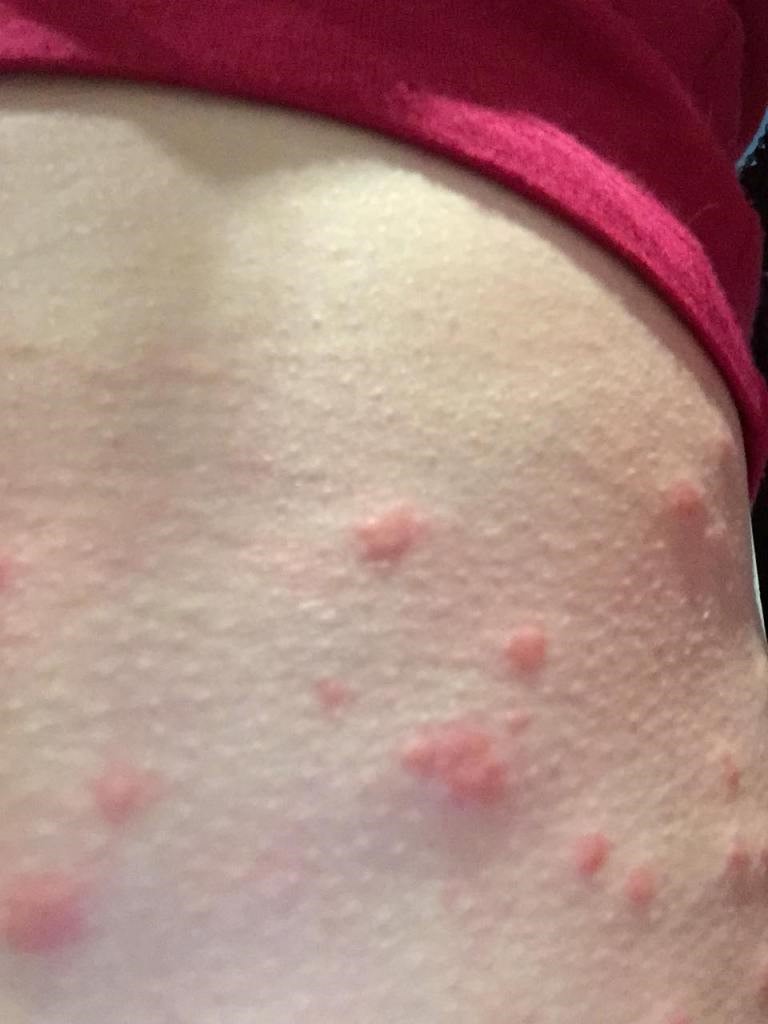A couple of months ago, as I snuggled up in the warm cocoon of my sleeping bag in the subtropical campground of Mt Barney, I was expecting a peaceful night’s sleep.
Instead, I was lured into a frenzy by an itch on my elbow.
My brain said, “Don’t scratch,” but my fingers refused to listen. I was powerless against the intense urge to rub the sh*t out of my skin, even before I was fully conscious. So pleasurable was this sensation that my self-discipline alluded me for several heavenly minutes as my fingernails found new pleasure sites in the form of itchy bumps all the way up the back of my arm.
As I regained control, I had a vision of the day before, hanging out around the spectacular cliffs of the Glass House Mountains in south-eastern Queensland. Amongst the mist, lush green fernery and whip bird calls, occasional tiny insects flitted around.
Watching one of these bugs land on my bare arm as I sipped my tea reminded me of my childhood. After rain, little insects called thrips appeared from nowhere and they were never a bother, so I saw no reason to fear them.
Unfortunately, these critters were not innocent little thrips. They were micro-monsters called midges. And, as a result of my innocence, my body was now covered in their itch-inducing welts.
Let this never be you.
What are midges
Midges, sometimes incorrectly called sandflies, are tiny fly-like insects, 2-3 mm in length. They are experts in sucking your your blood without asking. Unlike mosquitoes, which you can often spot and swat, you won’t often see midges snacking on your veins. But if you hike for long enough, you will meet them at some point, because they are found around the world.

Hikers on the Milford Track in New Zealand, Machu Picchu in Peru and the West Highland Way in Scotland will have learned tips on managing midges, where they’re known to dance at dawn and dusk.
Midges thrive in coastal locations with warm humid conditions. Unlike mosquitos, they don’t fancy you as food. Rather, they want the protein in your vital fluid to mature their eggs. And once they smell you, they’re on a mission.
How to avoid them
When choosing hiking locations, try to avoid the local midge breeding sites and seasons. If this isn’t possible, here’s some ways to manage them:
- Unlike mozzies, who love the smell of our ankles and can bite through clothing, midges aren’t that tough. Their bites can be avoided by covering up all skin, preferably with long, loose-fitting, light-coloured clothing.
- You can use insect repellents. Choose those containing either diethyl toluamide (DEET) or picaridin and always read the label carefully for coverage and duration. Spray generously on clothing for extra protection.
- Be aware of the phases of the moon. Adult biting midges often emerge during new and full moon phases.
- Ensure you’re safely inside your tent at dawn and dusk when they’re most active.
- Increase the effectiveness of insect screens and other biting midge resting areas by using residual surface spray insecticides.
What happens if they bite you?
These critters are sneaky so you might not realise you’ve been bitten until several hours or even days later. At that point, you might feel anything from slightly itchy to catastrophically itchy bumps. If you scratch them you’ll most likely create raised big crimson raised welts.
I’ve seen some wild women react with itchy red bumps that last for a couple of weeks while others hardly notice they’ve been bitten. Scientists believe they’re attracted to CO2 and scent, a bit like mozzies.

Biting midges are not known to transmit human diseases in Australia, but bites can cause a severe local (allergic) reaction which can be painful and/or irritating in some people. This may require the application of antiseptic cream or antibiotics.
So wild women, be alert but not alarmed. Experiencing nature’s beauty is worth every itchy nip.









